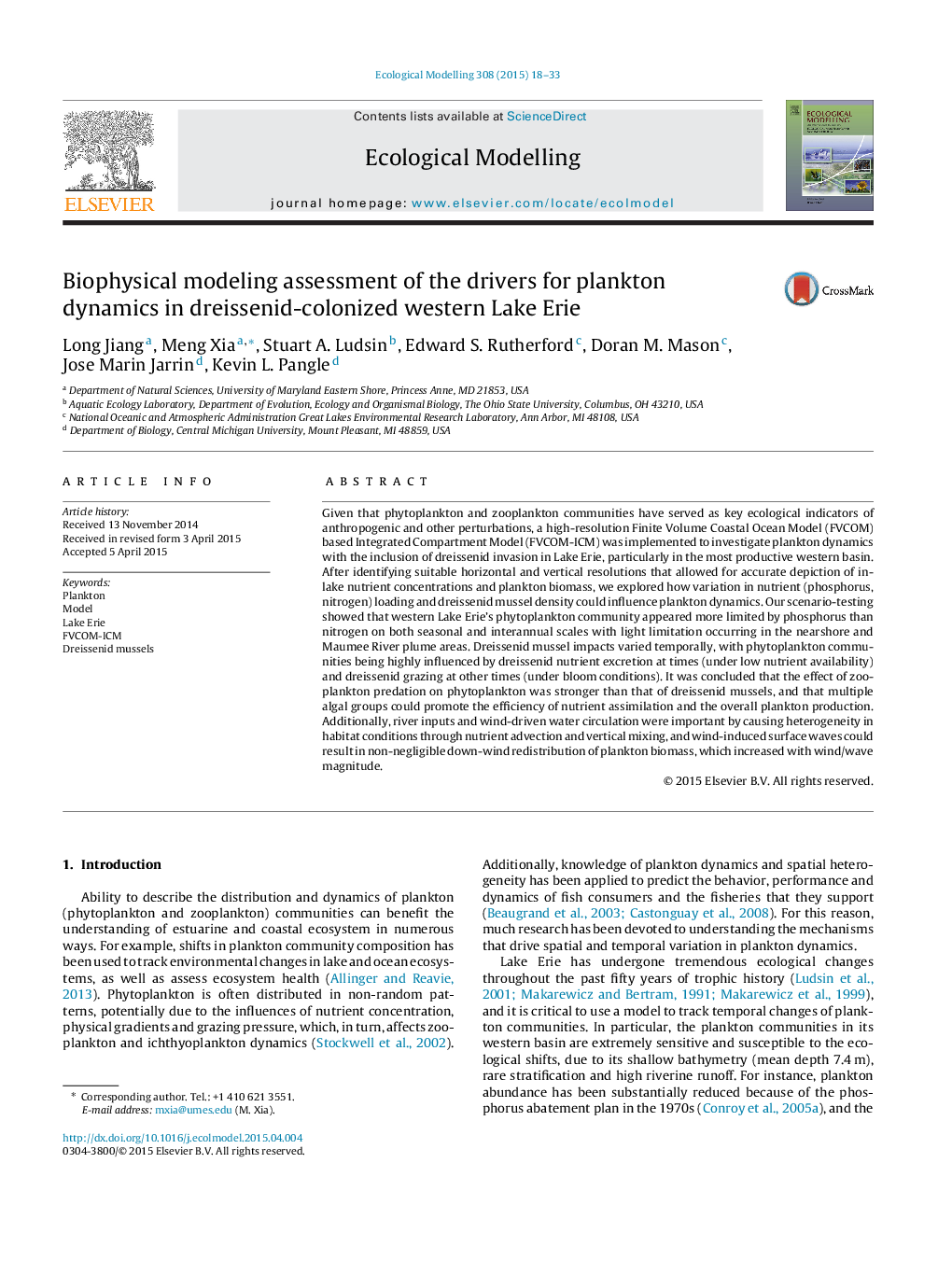| کد مقاله | کد نشریه | سال انتشار | مقاله انگلیسی | نسخه تمام متن |
|---|---|---|---|---|
| 4375691 | 1617438 | 2015 | 16 صفحه PDF | دانلود رایگان |
• Plankton dynamics in western Lake Erie was simulated with a biophysical model.
• The main limiting nutrient for phytoplankton in spring and summer was phosphorus.
• Zooplankton had larger grazing pressure on phytoplankton than dreissenid mussels.
• Impacts dreissenid mussels on phytoplankton depended on nutrient availability.
• Physical forcing drove plankton spatial heterogeneity mainly by nutrient transport.
Given that phytoplankton and zooplankton communities have served as key ecological indicators of anthropogenic and other perturbations, a high-resolution Finite Volume Coastal Ocean Model (FVCOM) based Integrated Compartment Model (FVCOM-ICM) was implemented to investigate plankton dynamics with the inclusion of dreissenid invasion in Lake Erie, particularly in the most productive western basin. After identifying suitable horizontal and vertical resolutions that allowed for accurate depiction of in-lake nutrient concentrations and plankton biomass, we explored how variation in nutrient (phosphorus, nitrogen) loading and dreissenid mussel density could influence plankton dynamics. Our scenario-testing showed that western Lake Erie's phytoplankton community appeared more limited by phosphorus than nitrogen on both seasonal and interannual scales with light limitation occurring in the nearshore and Maumee River plume areas. Dreissenid mussel impacts varied temporally, with phytoplankton communities being highly influenced by dreissenid nutrient excretion at times (under low nutrient availability) and dreissenid grazing at other times (under bloom conditions). It was concluded that the effect of zooplankton predation on phytoplankton was stronger than that of dreissenid mussels, and that multiple algal groups could promote the efficiency of nutrient assimilation and the overall plankton production. Additionally, river inputs and wind-driven water circulation were important by causing heterogeneity in habitat conditions through nutrient advection and vertical mixing, and wind-induced surface waves could result in non-negligible down-wind redistribution of plankton biomass, which increased with wind/wave magnitude.
Journal: Ecological Modelling - Volume 308, 24 July 2015, Pages 18–33
